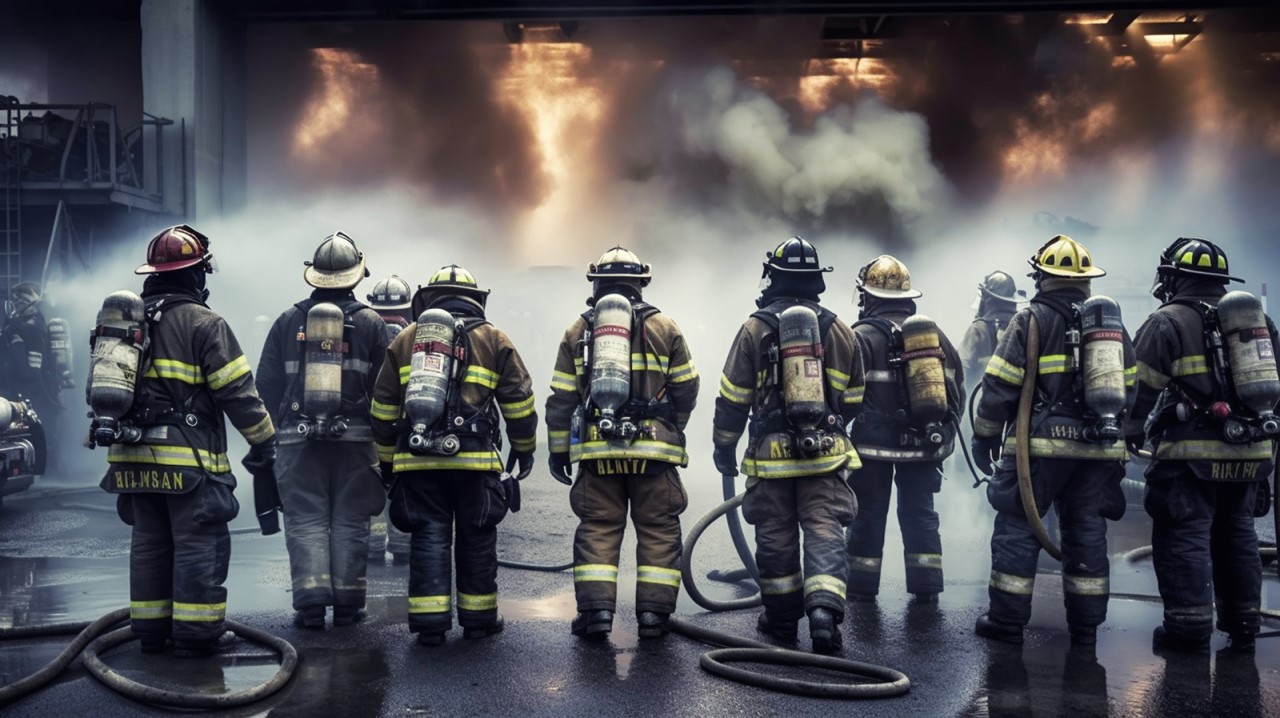
In today’s public safety profession (fire and emergency medical services), fostering inclusivity and equitable practices has become imperative for effective service delivery to the community and organizational development. As part of a professional development cohort, I had the opportunity to conduct a quantitative study that explored the correlation between diversity fatigue and meritocracy within the profession.
The research project was undertaken voluntarily and was not sponsored or obligatory for program completion. As a fire chief and a researcher, my aim was to make a meaningful contribution through this professional development opportunity.
The study specifically examined how factors such as race, gender, and rank influence this relationship. The findings of this research yielded valuable insights that can guide the development of strategies to continue cultivating inclusivity and equitable practices within our profession.
Uncovering the Relationship
Diversity fatigue refers to the exhaustion experienced by diversity-related initiatives, while meritocracy represents the belief in acknowledging and rewarding performance based on individual abilities. Both factors have significant implications for our emergency services profession’s continued growth and development.
The study focused on unraveling the relationship between diversity fatigue and meritocracy, specifically examining how they intersect with race, gender, and rank among fire service professionals. Through this investigation, I aimed to shed light on the important dynamics that may impact inclusion and equity efforts within our profession. By exploring these connections, I sought to understand the potential challenges and opportunities in promoting a more inclusive and equitable environment for all individuals in the fire service.
Methodological Approach
The research adopted a quantitative methodology to investigate the concepts. An online survey tool was used to collect information from the surveys that were sent to 184 fire service professionals throughout the United States. This approach aimed to ensure a wide representation of participants from various fire departments.
Valuable insights were derived from the collected data by employing several statistical techniques. These included calculating means (averages) and standard deviations (measures of variability), conducting analysis of variance (ANOVA) to examine differences between groups, performing the Mann-Whitney U test to compare two independent groups, and utilizing descriptive statistics to summarize, describe the data, and explore relationships between variables.
The survey used in the study was adapted from a previous work, “Diversity fatigue: A survey for measuring attitudes towards diversity enhancing efforts in academia,” with appropriate permission. The adapted survey was then validated to ensure internal consistency, meaning that the questions within the survey were reliable and consistently measured the intended constructs.
Key Findings
The study revealed that diversity fatigue levels were relatively low, with a mean score of 1.89 (Scale 1–5). The results indicated that fire service professionals exhibit resilience in the face of diversity-related initiatives. The mean score of 2.97 (Scale 1–5) for meritocracy highlighted the significance placed on recognizing individual performance based on talent and ability.
A notable finding was the negative correlation between diversity fatigue and meritocracy (rp = -0.61, p < .001). As diversity fatigue increases, the perception of a fair and merit-based system declines, potentially hindering the path to diversity, inclusivity, and equity. This finding may be interpreted that as fire service stakeholders emphasize diversity, the idea that members are hired or promoted may only be provided those opportunities with less emphasis on ability (merit). Race emerged as a significant factor, with variations observed in diversity fatigue. However, there were no significant variations in diversity fatigue based on gender and rank.
Regarding meritocracy, the study found significant disparities related to race and gender. Females and whites/Caucasians exhibited higher levels of belief in meritocracy, underscoring the importance of recognizing talent and ability. In contrast, Blacks/African Americans and non-whites did not report as high levels of diversity fatigue compared to their white/Caucasian counterparts. Gender, race, and rank were identified as influential predictors of both diversity fatigue and meritocracy.
Implications
It is important to note that these findings may not apply to the entire fire profession throughout the United States, but they still hold significant implications within our profession. By recognizing the inverse relationship between diversity fatigue and meritocracy, we understand how these factors interconnect and influence diversity, equity, and inclusion efforts. Identifying the specific opportunities associated with gender, race, and rank enables leaders in different municipalities to develop targeted strategies that foster a more inclusive and equitable environment within the emergency services profession.
Moving Forward
Although the study reveals relatively low levels of diversity fatigue, there remains ample room for further exploration into the dynamics of diversity and meritocracy in the emergency services profession. Future research efforts should offer deeper insights, allowing us to establish policies and practices that promote inclusivity, fairness, and equal opportunities for all firefighters. Moreover, EMS leaders can benefit from understanding the implications of diversity fatigue and meritocracy within their organizations, as it can assist them in fostering a supportive and inclusive environment.
Promoting inclusivity and equity within the fire service is essential for our professional growth, enhancing collaboration, and effectively serving our diverse communities. By acknowledging and tackling the challenges of diversity fatigue while embracing the benefits of a fair and impartial system, we pave the way for a more inclusive fire and emergency medical services profession in the twenty-first century.

DR. HEZEDEAN SMITH, CFO, CEMSO, CPM, CHSE, NRP, FACPE, MIFireE, has spent more than 35 years in the emergency services profession. He is the fire chief of Polk County Fire Rescue, in Bartow, Florida. He is the COO of Global Emergency Services Consulting Group, LLC, and an adjunct assistant professor at Embry-Riddle Aeronautical University.
References
Celarent, B. (2009). Review of The Rise of the Meritocracy, 1870–2033 [Review of Review of The Rise of the Meritocracy, 1870–2033, by M. Young]. American Journal of Sociology, 115 (1), 322–326. https://doi.org/10.1086/605763
Diversity Fatigue: What It Is and Why It Matters. (2020, September 3). Employers Council. https://www.employerscouncil.org/resources/diversity-fatigue-what-it-is-and-why-it-matters/
Diversity fatigue. (n.d.). Making the most of workplace diversity requires hard work as well as good intentions. The Economist. Retrieved May 27, 2023, from https://www.economist.com/business/2016/02/11/diversity-fatigue
Farmanesh, P., Vehbi, A., Zargar, P., Sousan, A., & Bhatti, F. (2020). Is there Always a Positive Relationship Between Workplace Diversity and Organizational Performance, or Does Diversity Fatigue Imply a Suppressing Effect? South East European Journal of Economics and Business, 15 (1), 14–26. https://doi.org/10.2478/jeb-2020-0002
Muffler, S. C., Cavico, F. J., & Mujtaba, B. G. (2010). Diversity, Disparate Impact, and Ethics in Business: Implications of the New Haven Firefighters’ Case and the Supreme Court’s Ricci v. DeStefano Decision. SAM Advanced Management Journal (07497075), 75 (3), 11–20.
Nielsen, M. W. (2016). Limits to meritocracy? Gender in academic recruitment and promotion processes. Science & Public Policy (SPP), 43 (3), 386–399. https://doi.org/10.1093/scipol/scv052
Relationship Between Workplace Diversity and Organizational Performance, or Does Diversity Fatigue Imply a Suppressing Effect? South East European Journal of Economics and Business, 15 (1), 14–26. https://doi.org/10.2478/jeb-2020-0002
Smith, J. L., McPartlan, P., Poe, J., & Thoman, D. B. (2021). Diversity fatigue: A survey for measuring attitudes towards diversity enhancing efforts in academia. Cultural Diversity and Ethnic Minority Psychology. https://doi.org/10.1037/cdp0000406
Wang, L. L.-C. (1988). Meritocracy and diversity in higher education: Discrimination against Asian Americans in the post-Bakke era. The Urban Review, 20 (3), 189–209. https://doi.org/10.1007/BF01112009
New, Reduced Membership Dues
A new, reduced dues rate is available for CAOs/ACAOs, along with additional discounts for those in smaller communities, has been implemented. Learn more and be sure to join or renew today!
